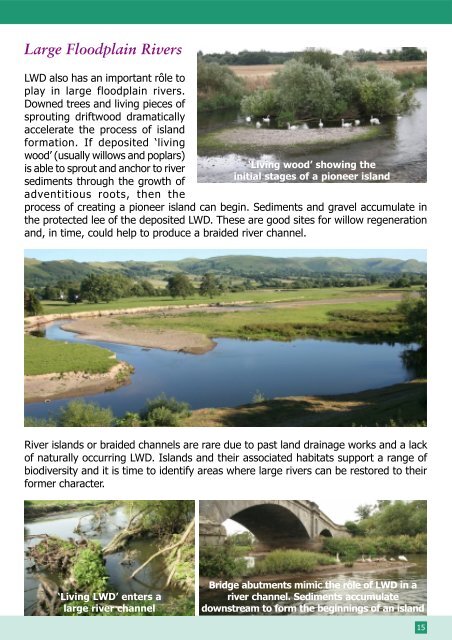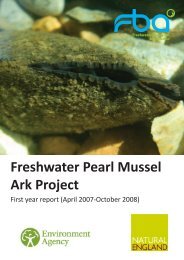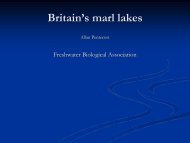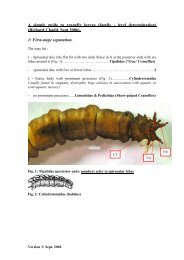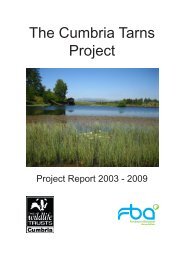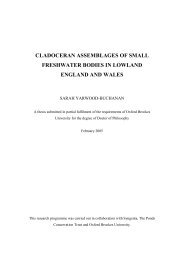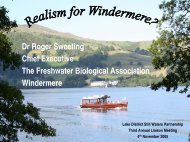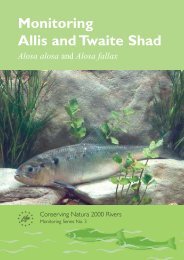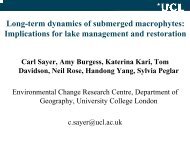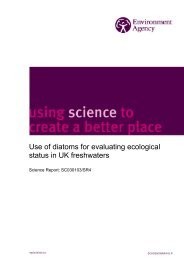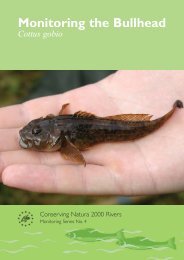Managing Woody Debris - FreshwaterLife
Managing Woody Debris - FreshwaterLife
Managing Woody Debris - FreshwaterLife
Create successful ePaper yourself
Turn your PDF publications into a flip-book with our unique Google optimized e-Paper software.
Large Floodplain Rivers<br />
LWD also has an important rôle to<br />
play in large floodplain rivers.<br />
Downed trees and living pieces of<br />
sprouting driftwood dramatically<br />
accelerate the process of island<br />
formation. If deposited ‘living<br />
wood’ (usually willows and poplars)<br />
is able to sprout and anchor to river<br />
sediments through the growth of<br />
adventitious roots, then the<br />
process of creating a pioneer island can begin. Sediments and gravel accumulate in<br />
the protected lee of the deposited LWD. These are good sites for willow regeneration<br />
and, in time, could help to produce a braided river channel.<br />
River islands or braided channels are rare due to past land drainage works and a lack<br />
of naturally occurring LWD. Islands and their associated habitats support a range of<br />
biodiversity and it is time to identify areas where large rivers can be restored to their<br />
former character.<br />
‘Living LWD’ enters a<br />
large river channel<br />
‘Living wood’ showing the<br />
initial stages of a pioneer island<br />
Bridge abutments mimic the rôle of LWD in a<br />
river channel. Sediments accumulate<br />
downstream to form the beginnings of an island<br />
15


